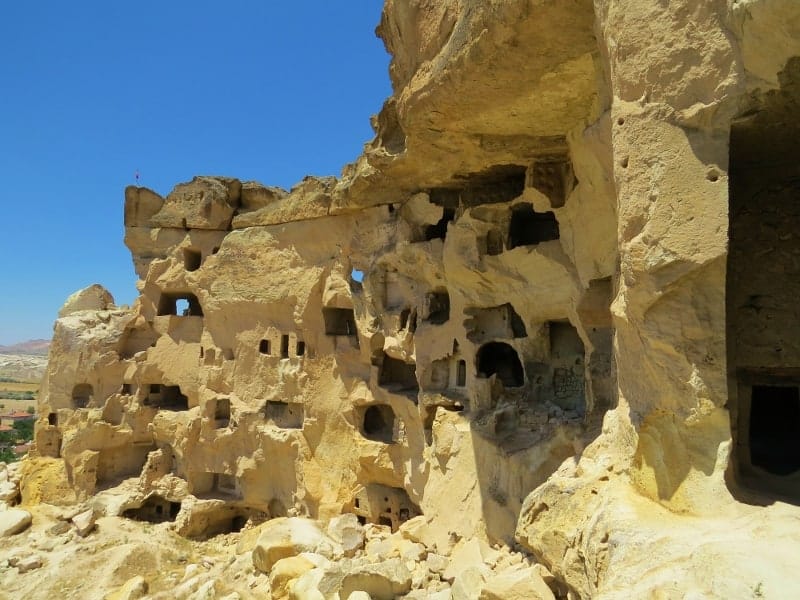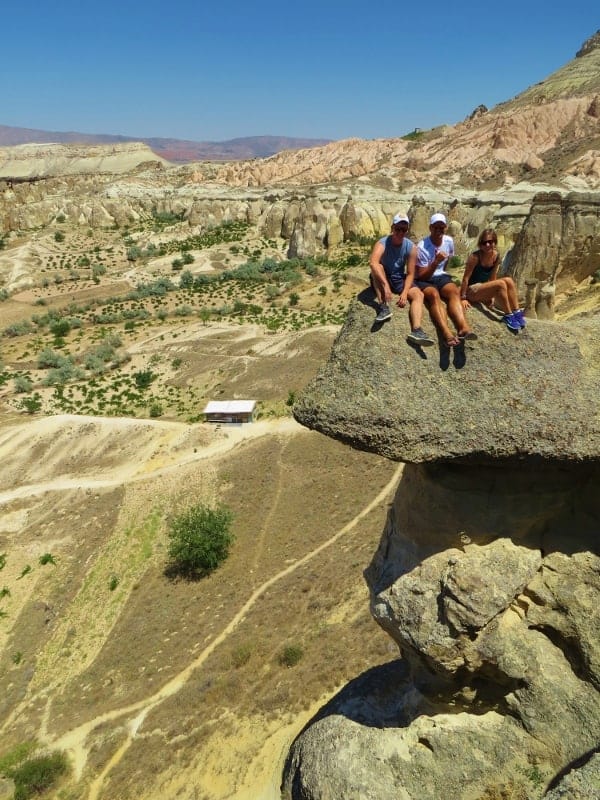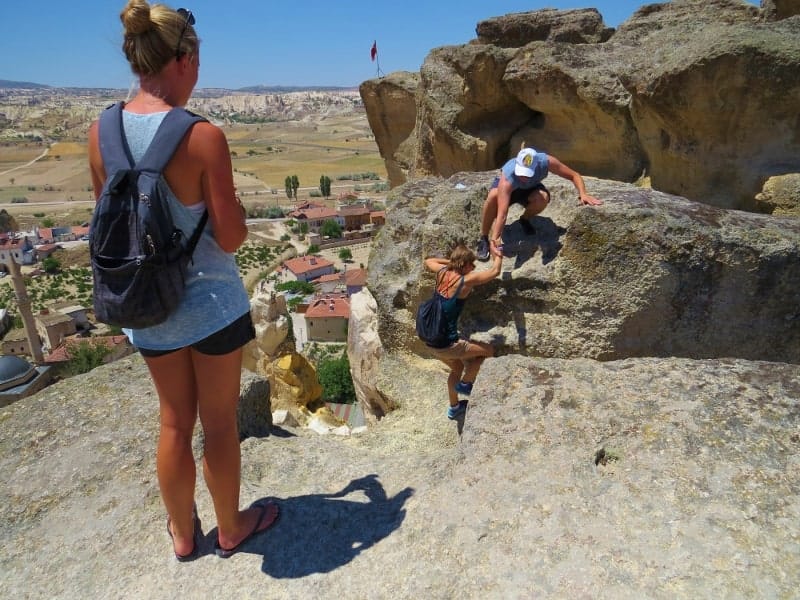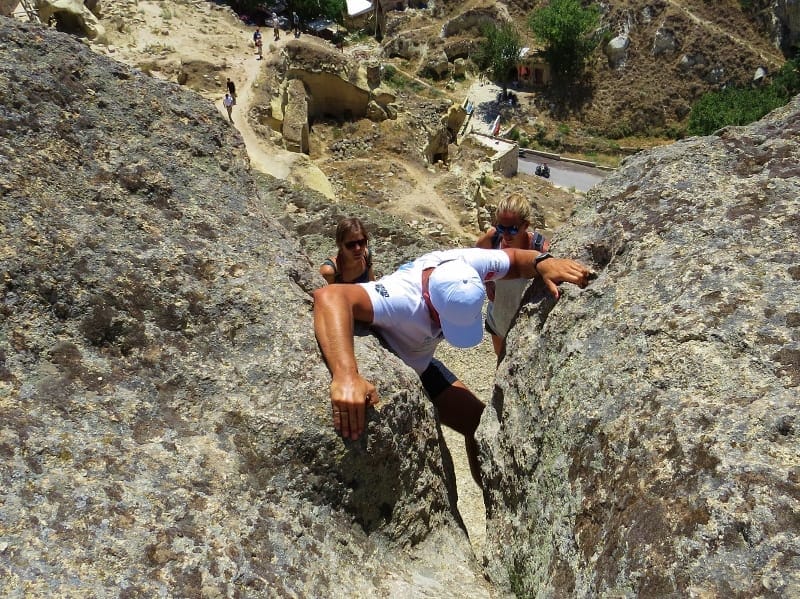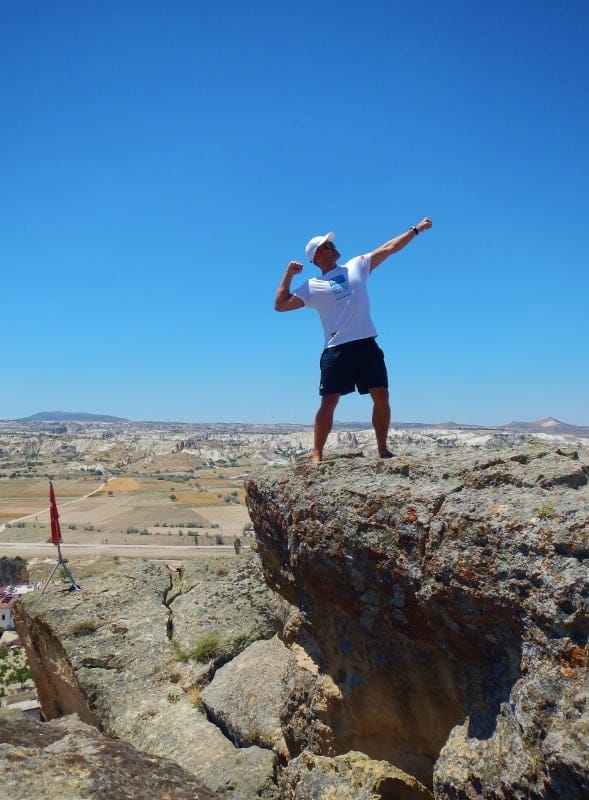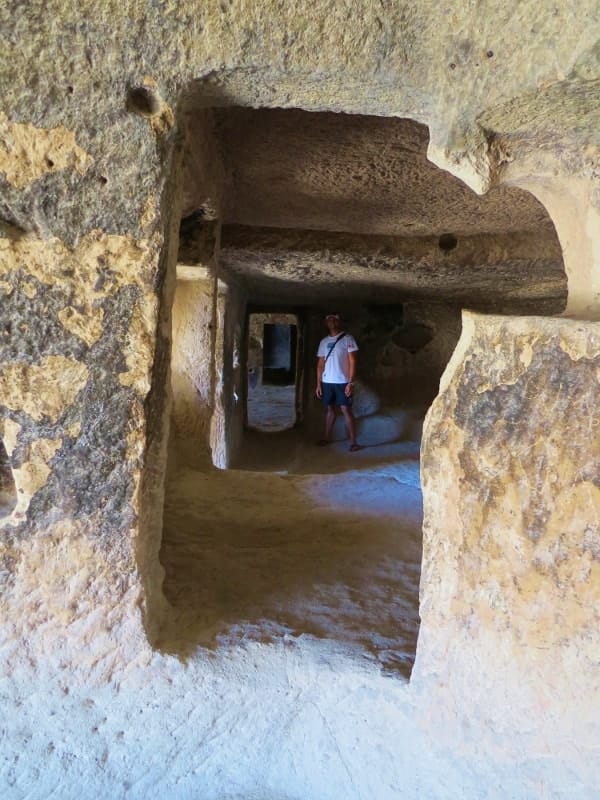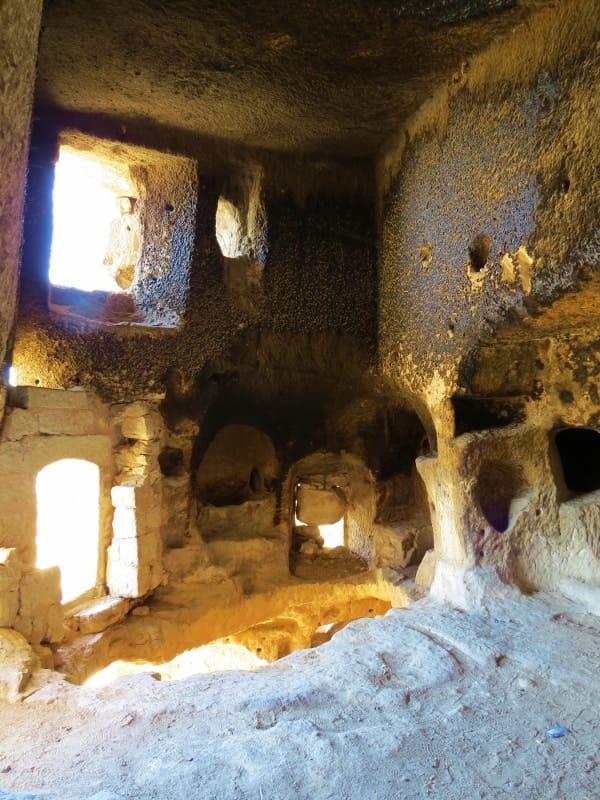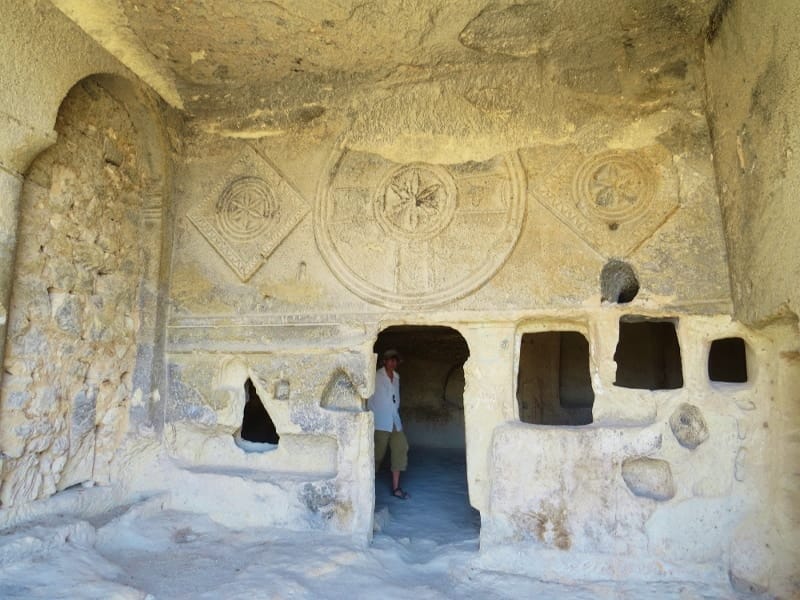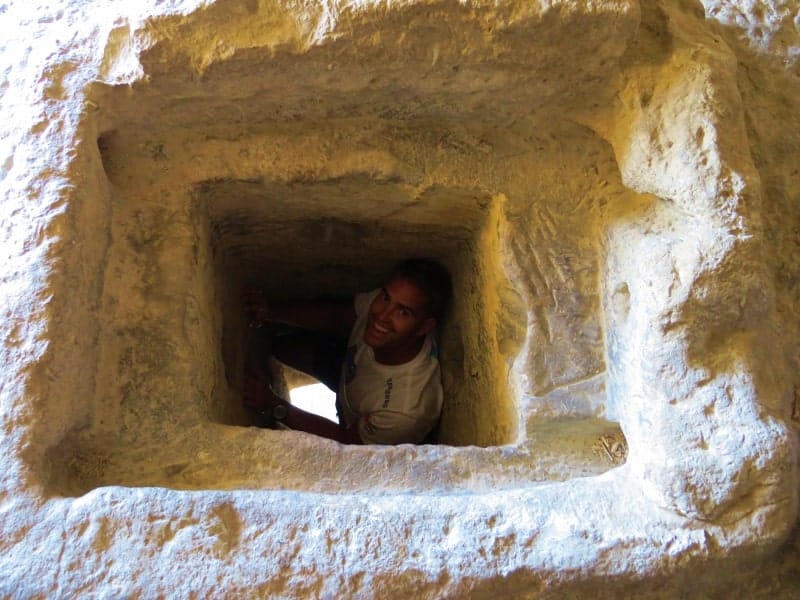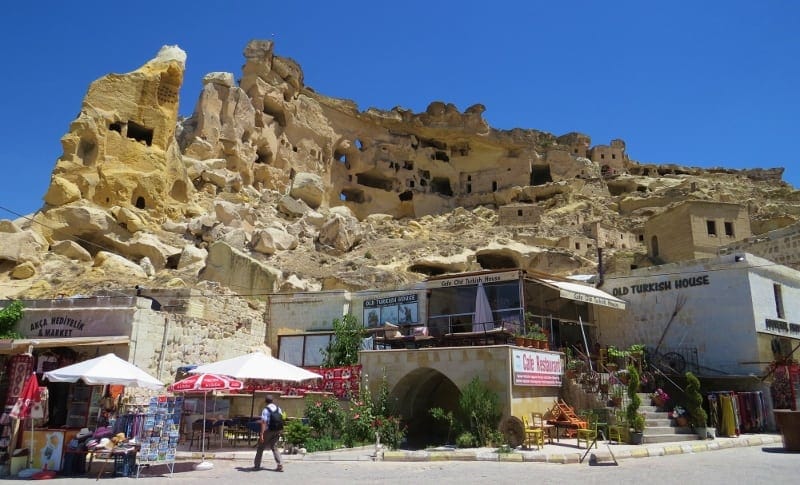Of all the amazing things to do in Cappadocia, we believe exploring the castle and old village (Eski Köy) at Çavuşin is a must do! Upon arrival to Cappadocia you will see a lot of multi storey fairy chimney’s but unfortunately only the ground level rooms are usually accessible (unless you are a fearless climber of course!) So, if you are like us and want to explore the higher levels, or possibly even climb to the very top where the flag is flying, then we recommend walking, biking or catching a bus to Çavuşin.
According to a staff member at our hostel, the front of the castle collapsed 90 years ago during an earthquake. However, a lot of the ruins are still intact and exploring them will turn any lad into a young boy again. Climbing over debris, hoisting yourself up to higher levels and perching on overhangs, it is a challenging climb and I am sad to say, our jandals were not the most appropriate climbing shoes!
There is no fee to enter the castle and old village which is definitely a bonus!
